The year 1904 marked the end of regular production for the Morgan Silver Dollar, a coin that holds significant historical value. Although special editions were minted in 1921 and 2021, these were unique releases. The 2021 Silver Dollars were exclusively produced in San Francisco and Philadelphia, while 1921 saw the only instance of $1 coins being minted in Denver. However, our focus here is on the value of the 1904 Silver Dollar.
Table of Contents
- Value Charts (Business Strike) for 1904 Silver Dollar
- Value Chart for 1904 Silver Dollar (Proof)
- Historical Significance of the 1904 Silver Morgan Dollar
- Design of 1904 Silver Dollar
- Grading Guide for 1904 Silver Dollar
- 1904 Silver Dollar Value Guides
- Rare 1904 Silver Dollar Errors List
- Where to Sell Your 1904 Silver Dollar?
- What to look for in a 1904 Silver Dollar Coin?
- FAQs on 1904 Silver Dollar Value
- Final Thoughts
Value Charts (Business Strike) for 1904 Silver Dollar
| Coin | XF 45 | AU 55 | MS 60 | MS 63 | MS 65 | MS 67 |
|---|---|---|---|---|---|---|
| 1904-O Silver Dollar | $48 | $62 | $75 | $90 | $240 | $5,000 |
| 1904-O Silver Dollar Proof-Like | NA | NA | $120 | $185 | $450 | $21,000 |
| 1904-O Silver Dollar Deep-Mirror Proof-Like | NA | NA | $160 | $300 | $1,350 | $27,500 |
| 1904-S Silver Dollar | $650 | $2,150 | $3,300 | $6,000 | $8,500 | $87,500 |
| 1904-S Silver Dollar Proof-Like | NA | NA | $3,500 | $9,500 | $24,500 | NA |
| 1904 No Mint Mark Silver Dollar | $70 | $90 | $150 | $525 | $1,900 | $40,000 |
| 1904 No Mint Mark Silver Dollar Proof-Like | NA | NA | $800 | $2,750 | $26,500 | NA |
| 1904 No Mint Mark Silver Dollar Deep-Mirror Proof-Like | NA | NA | $2,250 | $9,000 | $70,000 | NA |
Value Chart for 1904 Silver Dollar (Proof)
| Coin | PR/PF 50 | PR/PF 60 | PR/PF 65 | PR/PF 66 | PR/PF 67 | PR/PF 68 |
|---|---|---|---|---|---|---|
| 1904 Proof No Mint Mark Silver Dollar | $1,050 | $2,200 | $7,000 | $9,250 | $35,000 | $55,000 |
| 1904 Proof No Mint Mark Silver Dollar Cameo | NA | NA | $24,000 | $36,500 | $72,500 | NA |
Historical Significance of the 1904 Silver Morgan Dollar
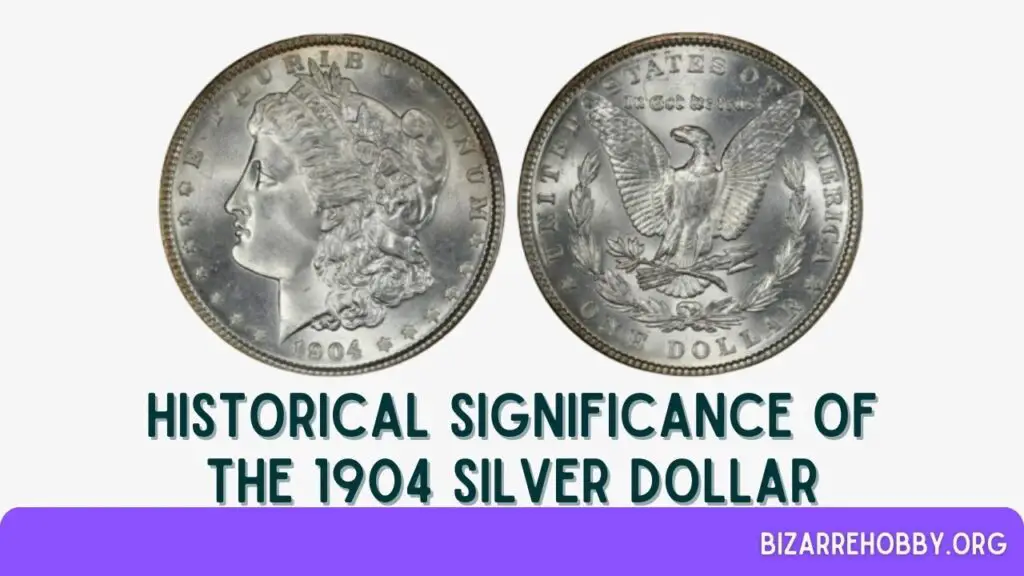
In the United States, the Chief Mint Engraver is responsible for the design of coins. The first Chief Engraver was a Scotsman named Scott, who dropped one ‘T’ from his name upon moving to the U.S. The subsequent three Chief Engravers were Pennsylvanians, which was fitting since the U.S. Mint was headquartered in Philadelphia. The fifth and sixth Chief Engravers were a father-and-son duo from London.
William Barber, the fifth Chief Engraver, learned his craft from his father, John, and later passed it on to his son, Charles. Their British training gave their designs a distinct style compared to their American predecessors. This British influence was well-received, as evidenced by the Mint Director’s decision in 1876 to seek recommendations from the Royal Mint in the UK.
During this period, the Silver Trade Dollar was widely used internationally, competing with foreign silver coins. However, there was a need for a Silver Dollar that would circulate domestically. William Barber had designed the Trade Dollar, but Mint Director Henry Linderman sought an English Assistant Engraver for the new project, leading him to contact the Royal Mint.
How the Morgan Dollar Began?
C.W. Freemantle, the Deputy Mint Master in the UK, recommended George Morgan for the task. Morgan was initially supposed to undergo six months of training under William Barber, working alongside Charles Barber, who was also an assistant at the time. Morgan ended up staying on, and after William’s death, Charles took over. Eventually, George Morgan succeeded Charles as Chief Engraver.
George T. Morgan is renowned for redesigning the Silver Morgan Dollar, a project that brought him to the U.S. He modeled Lady Liberty on Anna Willess Williams, who preferred to remain anonymous. Morgan aimed to depict contemporary American features rather than the classical Greek ones seen on earlier coins.
Williams posed for Morgan five times as he perfected the design. Concurrently, Morgan studied bald eagles to create the reverse side of the coin. Meanwhile, the Bland-Allison Act was being pushed by lobbyists to ensure the U.S. Mint purchased a fixed amount of silver from miners annually. This silver was minted into Silver Dollars until the reserves were depleted in 1904.
Design of 1904 Silver Dollar
Understanding the anatomy of a coin is essential for collectors and enthusiasts. The heads side is known as the obverse, while the tails side is the reverse. The thin edge of the coin, often featuring ridges called reeds, is another important aspect.
The inscriptions on a coin are referred to as mottos or legends, and the images are known as devices. The background area is called the field. The raised border around the coin is the rim or collar, and the blank disc used to create the coin is called a planchet.
Obverse Design of 1904 Silver Dollar
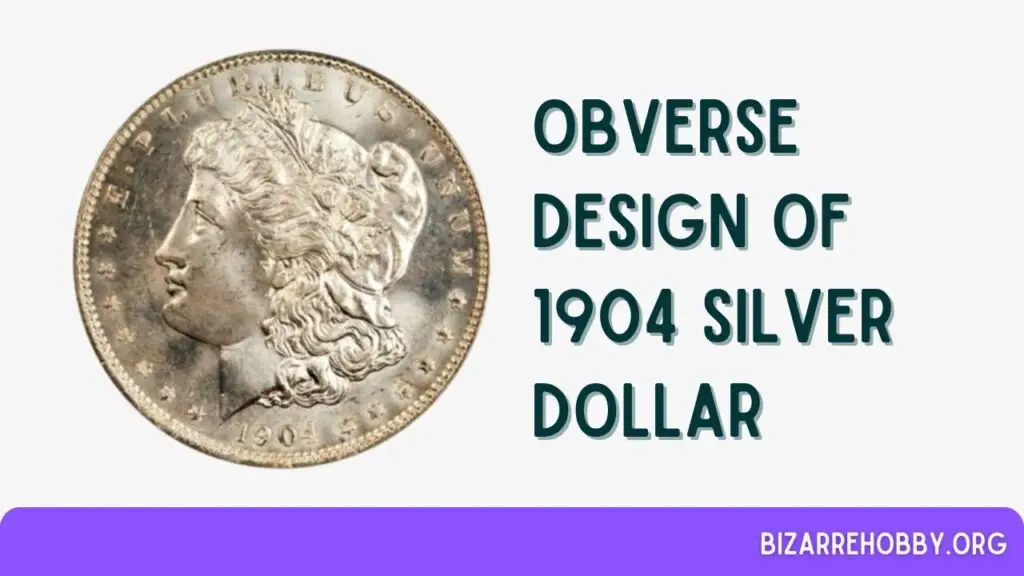
The obverse of the 1904 Silver Dollar showcases Lady Liberty adorned with a Phrygian cap and a headband inscribed with “Liberty.” Sprigs of wheat and cotton emerge from her cap, though the cotton leaves are often mistaken for maple leaves. Lady Liberty faces left, with the legend “E Pluribus Unum” above her head and the date below, flanked by 13 stars. The neckline cut-off features the initial “M” for Morgan, the coin’s designer.
Reverse Design of 1904 Silver Dollar
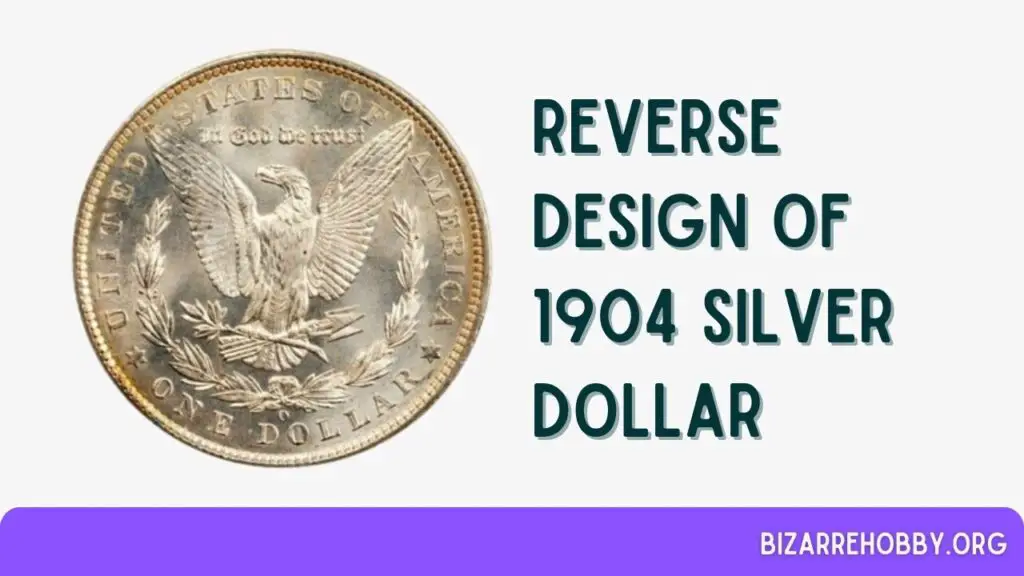
On the reverse, an eagle is depicted with wings outstretched, clutching three arrows and an olive branch. A laurel wreath encircles the eagle from wing to wing, tied with a ribbon at the center. The left ribbon loop bears the initial “M” for Morgan, and the mint mark is located beneath the ribbon knot. The top of the coin reads “United States of America” and “In God We Trust,” while the bottom is inscribed with “One Dollar.”
Technical Specifications of 1904 Silver Dollar
The 1904 Silver Dollar, part of the Morgan Dollar series, is composed of 90% silver and 10% copper, containing 412.5 grains of fine silver. It weighs 26.73 grams and features 189 edge reeds. The coin measures 38.1mm in diameter (1.5 inches) and 2.4mm in thickness (0.09 inches). For comparison, Morgan Dollars minted in 2021 and after 2023 are made of 99% silver. Additionally, some 1921 Morgan Dollars have 157 edge reeds.
Grading Guide for 1904 Silver Dollar
Grading coins, including the 1904 Morgan Dollar, is essential for determining their value. The Sheldon Scale, ranging from 1 to 70, is the standard grading system used for both old and new coins. This scale helps collectors and investors assess the condition and worth of their coins accurately.
| Sheldon Scale | Grade |
|---|---|
| 1 | Basal State-1 |
| 2 | Fair |
| 3 | Very Fair |
| 4, 5, 6 | Good |
| 7, 8, 10 | Very Good |
| 12, 15 | Fine |
| 20, 30 | Very Fine |
| 40 | Extremely Fine |
| 50 | About Uncirculated |
| 60 | Mint State |
| 65 | Mint State |
| 70 | Mint State |
Some Morgan Dollars, including the 1904 edition, exhibit exceptional reflectivity. These coins are categorized as Proof-Like (PL) or Deep-Mirror Proof-Like (DMPL). Despite being regular strike coins, their pristine condition and mirror-like surfaces make them resemble special edition collectibles, significantly enhancing their appeal and value.
To determine the precise value of your 1904 Silver Dollar, it is crucial to understand its grade. Accurate grading provides a clear picture of the coin’s condition, rarity, and market value.
For detailed guidance on grading your 1904 silver dollar, refer to our comprehensive grading guide for Morgan Silver Dollars. This step is indispensable for any collector or investor aiming to ascertain the true worth of their coin.
1904 Silver Dollar Value Guides
The 1904 Silver Morgan Dollars were minted in three locations: Philadelphia, New Orleans, and San Francisco. The New Orleans and San Francisco mints produced business strikes, which are regular coins intended for circulation. In contrast, the Philadelphia Mint produced both proof coins and circulating currency.
Proof coins are struck using specially prepared dies, giving them a distinct appearance. However, some uncirculated business strikes can closely resemble proof coins, known as Proof-Like (PL) and Deep-Mirror Proof-Like (DMPL) coins.
Silver Dollars, including the 1904 Morgan Dollar, are often categorized by VAMs, an acronym for Leroy Van Allen and A. George Mallis. These numismatists compiled an extensive list of die varieties for Morgan and Peace Dollars.
Each VAM variety holds significant value for collectors and traders. While over 3,000 VAMs exist, the Professional Coin Grading Service (PCGS) recognizes 317 Morgan Dollar VAMs and 52 Peace Dollar VAMs.
1904-O Silver Dollar Value

In 1904, the New Orleans Mint produced 3,720,000 Silver Morgan Dollars, marked with an “O”. In July 2017, a coin graded MS 67 sold for $39,950.
As of October 2023, the value of an MS 67 has decreased to $5,000 due to the availability of over a hundred coins in this grade. However, six coins graded MS 67+ are valued at $43,500. The MS 65 grade is less valuable, at $240, due to the submission of over 14,000 coins in this grade, which has driven down the price.
Proof-Like coins are rarer; an MS 67 PL was valued at $19,200 in September 2017 and has since increased to $21,000. An MS 66+ DMPL sold for $12,338 in 2018 and remains valued at $12,000, while an MS 67 DMPL is worth $27,500.
1904-S Silver Dollar Value

The San Francisco Mint produced 2,304,000 Silver Dollars in 1904, all of which were circulating coins marked with an “S”. In October 2015, an MS 67 coin sold for $70,500. With only two known examples, their value has risen to $87,500 as of October 2023. An MS 65 coin is valued at $8,500, with over 150 graded by PCGS.
An MS 60 coin is worth $3,300. For Proof-Like coins, an MS 66 PL sold for $30,550 in December 2013 and is now valued at $45,000. An MS 60 PL is worth $3,500, and an MS 65 PL sells for $24,500 as of October 2023. PCGS has not graded any DMPL submissions, but NGC sold two MS 64 DMPL coins in 2005 for $9,200 in January and $14,950 in May.
1904 No Mint Mark Silver Dollar Value
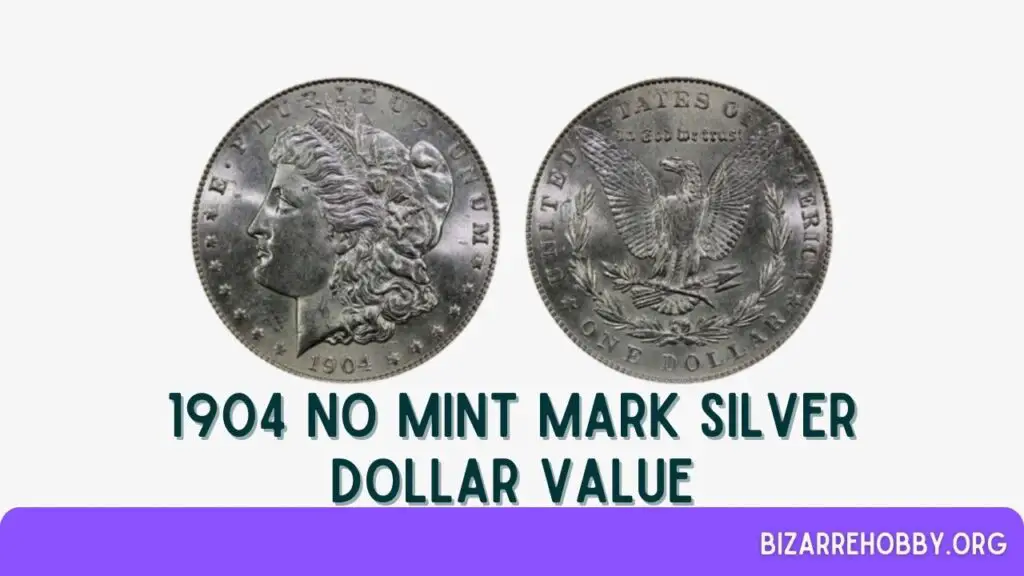
The Philadelphia Mint produced 2,788,000 circulating Silver Dollars in 1904, which do not bear a mint mark. In October 2015, an MS 66 coin sold for $17,625. With sixty coins graded by PCGS, their current value is $6,250. Eleven MS 66+ coins are valued at $13,750, and one MS 67 coin is worth $40,000.
Over 2,000 coins graded MS 63 are valued at $525. For Proof-Like coins, an MS 65 sold for $19,550 in October 2005 and is now valued at $26,500. Fifteen MS 64 PL coins are valued at $4,250, and an MS 60 PL is worth $800 as of October 2023.
An MS 65 DMPL was valued at $54,625 in July 2008 and has increased to $70,000, while an MS 60 DMPL is worth $2,250.
1904 Proof No Mint Mark Silver Dollar Value
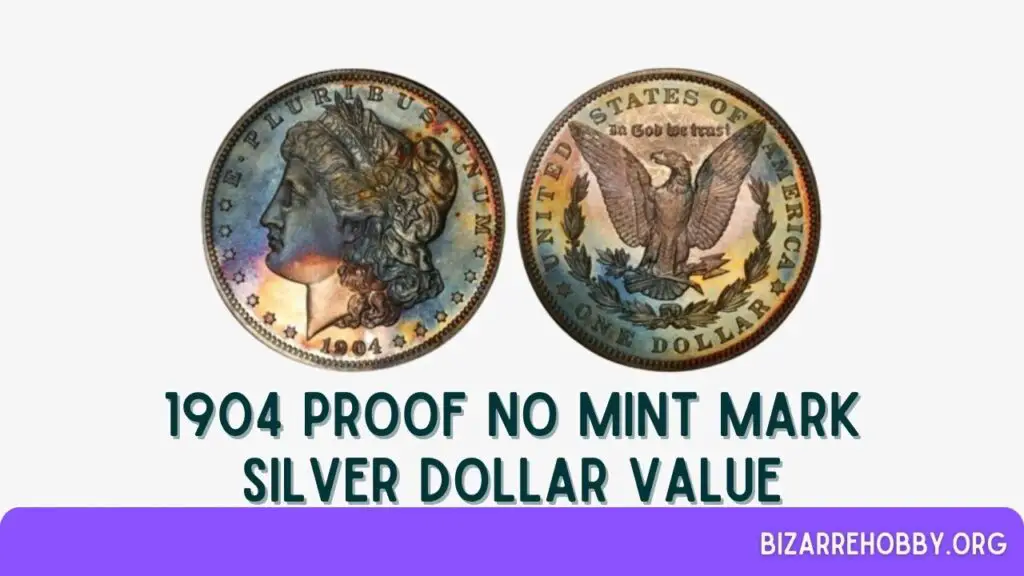
In 1904, Proof Silver Dollars were distinguished by their mirror-like fields and frosted devices. These coins were produced using special proof dies, which were meticulously prepared to achieve their unique appearance.
The fields of the dies were polished with horsehair to enhance their shine, while the devices were treated with acid to create a frosted texture. This frosting effect diminished slightly with each strike, so the first 50 to 100 coins exhibited the highest contrast and were graded as Deep Cameo (DCAM) or Ultra Cameo. The subsequent 50 to 100 coins were graded as Cameos.
The Philadelphia Mint produced 650 Proof Morgan Dollars in 1904, all composed of 90% silver and lacking mint marks. In December 2016, a PR 67+ coin sold for $34,075. As of October 2023, its value has increased to $42,500, with four examples graded by PCGS. A PR 68 is estimated to be worth $55,000.
Even lower-grade 1904 (P) Proof Dollars are valuable due to their rarity. A PR 45 is valued at $900 as of October 2023. For cameo coins, a PR 67 CAM graded by NGC sold for $51,700 in August 2017.
Although NGC-graded coins typically fetch lower prices than those graded by PCGS, a PR 67 CAM is now estimated at $72,500 by PCGS, despite no recent sales or submissions.
Rare 1904 Silver Dollar Errors List
Despite the precision of minting equipment, errors can occur during the coin production process. These mistakes are typically caught and corrected before the coins enter circulation.
However, when flawed coins do make it into the public domain, they often become highly valuable to collectors. Here are some notable and profitable errors found in 1904 Silver Dollars.
1904-O Silver Dollar Planchet Lamination Error

A lamination error occurs when a layer of metal peels away from the coin, revealing the underlying metal. The 1904-O Silver Dollar, composed of 90% silver and 10% copper, can exhibit this error. For instance, a lamination above the “ME” in “America” exposed the copper beneath. A coin with this error, graded MS 63, sold for $90.
1904-O Silver Dollar Rotation Error
During the minting process, the obverse and reverse dies strike the blank simultaneously, typically positioned at 180° to each other. This alignment ensures that flipping the coin vertically keeps the design upright.
However, a rotation error occurs when one die is misaligned, such as at 170°, causing the coin to appear skewed when flipped. Although not graded, a 1904-O Silver Dollar with this error sold for $215.
1904 (P) and 1904-S Silver Dollar Struck Thru Errors
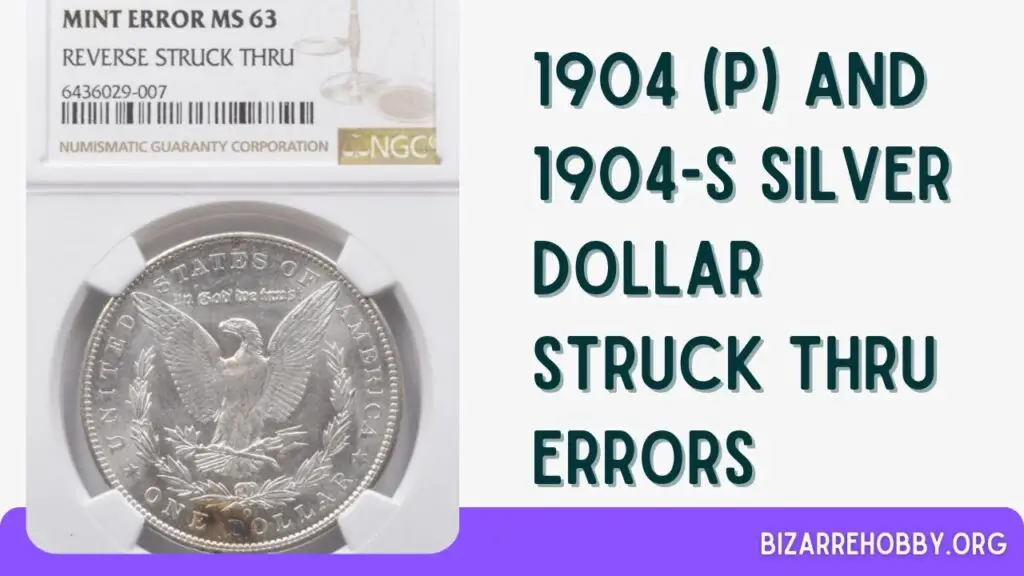
A struck-through error happens when a foreign object, such as cloth, tape, a staple, or a metal shard, gets between the die and the blank during striking. This leaves an impression of the object on the coin. Identifying the foreign material, especially if remnants are still attached, increases the coin’s value.
A 1904 (P) Silver Dollar with a struck-through error, graded AU 58, sold for $90. A 1904-S Silver Dollar with a more significant struck-through error fetched $230.
Where to Sell Your 1904 Silver Dollar?
Knowing the value of your 1904 Silver Dollar is just the first step. Selling it online can be convenient and profitable. Here are some recommended platforms, along with their pros and cons:
- eBay: Widely used, large audience, but competitive and requires seller fees.
- Heritage Auctions: Trusted auction house, attracts serious collectors, but may have higher fees.
- GreatCollections: Specializes in coins, offers professional grading, but may take longer to sell.
For a detailed comparison, check out our guide on the best places to sell coins online.
What to look for in a 1904 Silver Dollar Coin?
When evaluating a 1904 Silver Dollar, several key factors can significantly impact its value and desirability:
- Mint Mark: Check for the mint mark, which indicates where the coin was produced. The 1904 Silver Dollar can have an “O” for New Orleans, an “S” for San Francisco, or no mint mark for Philadelphia. Each mint mark can affect the coin’s rarity and value.
- Condition and Grade: The coin’s condition is crucial. Coins are graded on the Sheldon Scale from 1 to 70, with higher grades indicating better preservation. Look for coins with minimal wear, clear details, and no significant damage. Proof-Like (PL) and Deep-Mirror Proof-Like (DMPL) coins are especially valuable due to their reflective surfaces.
- Errors and Varieties: Errors such as planchet lamination, rotation errors, and struck-through errors can increase a coin’s value. Additionally, VAM varieties, which catalog specific die variations, are highly sought after by collectors.
- Historical Significance: Understanding the historical context of the 1904 Silver Dollar can add to its appeal. This coin is part of the Morgan Dollar series, which has a rich history and is beloved by collectors.
- Authenticity: Ensure the coin is authentic. Counterfeit coins can be common, so purchasing from reputable dealers or having the coin certified by a professional grading service like PCGS or NGC is advisable.
FAQs on 1904 Silver Dollar Value
How Much Silver is in a 1904 Silver Dollar?
The 1904 Silver Dollar contains 412.5 grains of fine silver, which constitutes 90% of the coin’s composition. The remaining 10% is copper, added to enhance the coin’s durability and ease the minting process. For reference, one grain is approximately 64.9 milligrams. Precious metals are traditionally measured in troy ounces and grains.
Is 1904 Silver Dollar Rare?
The 1904 Morgan Silver Dollar isn’t particularly rare, but its rarity and value can vary based on its mintmark, condition, and whether it is a proof or a regular strike.
Final Thoughts
The 1904 Silver Dollar is a fascinating piece of numismatic history, offering collectors a blend of historical significance, aesthetic appeal, and potential investment value.
Understanding what to look for in these coins can help you make informed decisions and appreciate the nuances of this classic American coin.
By focusing on mint marks, condition, errors, and authenticity, you can uncover the true value of your 1904 Silver Dollar and enjoy the rich legacy it represents.
